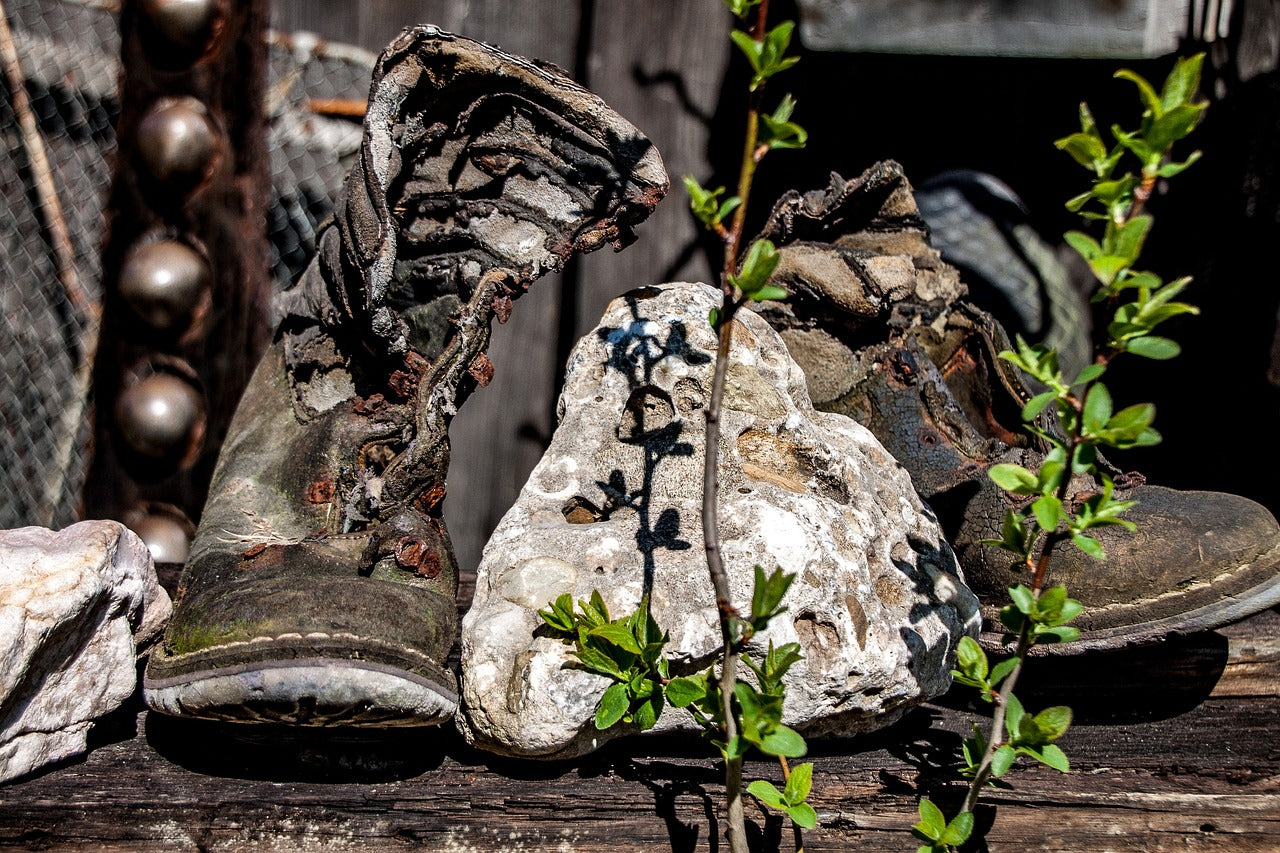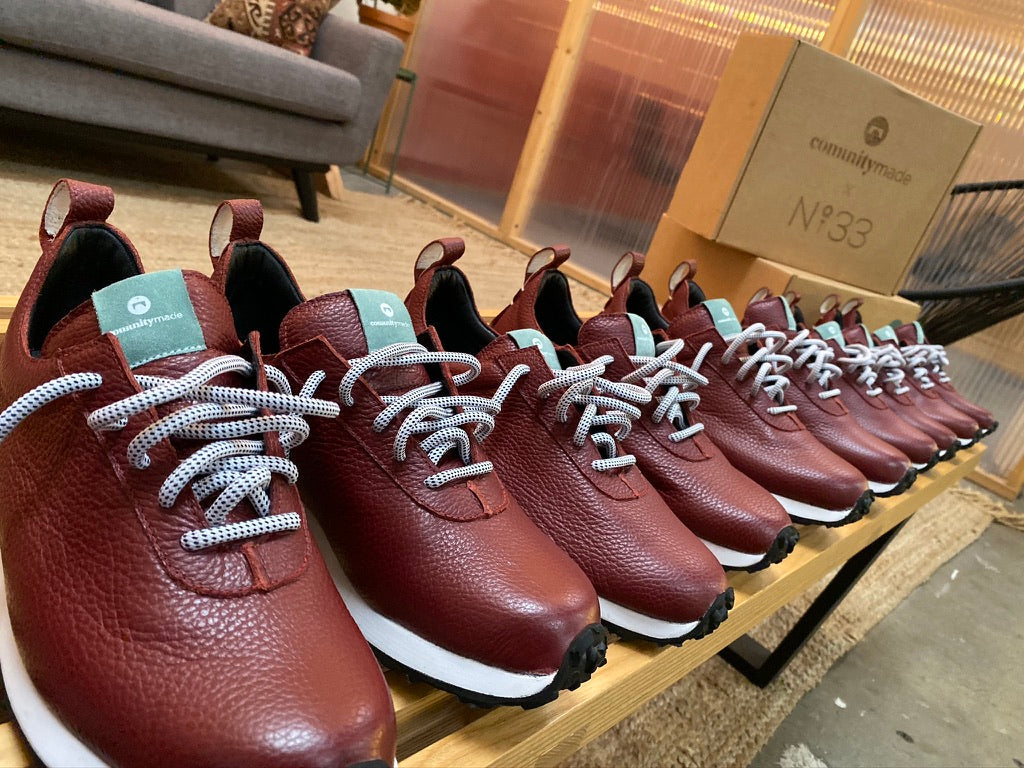
We all agree that myths and legends were a great part of our childhood. The Red Shoes and Cinderella, in particular, shaped our perceptions and beliefs to some extent. But the myths, legends, and superstitions about shoes didn't start recently. They’ve always been there throughout the history of our human civilization.
Take high heels, for instance. You could be forgiven for thinking that they were made for women. But they’ve got a long, storied, and pretty weird history dating back to the 1500s – involving prostitution, religious ceremonies, child brides, gender-bending fashionistas, and decadent kings.
Besides, high-heels weren’t even intended for women to begin with! It turns out that we’re only the late adopters of high heeled shoes. The real fashionistas on the high heel front were actually men.
High heels were considered the epitome of masculinity. Only later, women started to add heels at the back of their shoes to assimilate some of that male power. Before we explore the shoe myths, legends, and superstitions from around the world, it’s good to note that some of these cultures still influence our behaviors, even to this day. A good example is the fact that certain cultures remove their shoes before entering a house or a sacred place.
Myths, Legends, and Superstitions Related to Shoes
Myths, folklore, fairytales, and superstitions around the world and throughout history give us a glimpse into the importance of shoes. In the Bible, Boaz can’t marry Ruth until he gets the left shoe of his uncle.
In Snow White, her evil stepmom had to dance in white-hot iron shoes at the wedding as punishment. Even Sherlock Holmes put the Persian woman’s left slipper atop his fireplace mantle to store his tobacco in the toe. Let’s explore some other historical footwear folklore:
Shoe on a Table Myth
There’s a superstition that bad luck will come to you if you place shoes on a table. A belief common in North England is that superstition comes from mining. When miners died at work, their shoes were brought home and placed on the table – so the practice was believed to be a sign of death in the family. It’s also held that putting a new pair of boots on the table would provoke fights in the house.
Lucky Horseshoe Myth
The lucky horseshoe is a well-known symbol of good fortune in early Western cultures. Hanging a horseshoe above a doorway, with the open end facing up, is believed to collect and hold luck. This practice dates back to ancient times when horseshoes were made of iron, which was thought to ward off evil spirits. The early pagan Europeans also found horseshoes in a crescent moon shape to symbolize fertility.
Curse of the Red Shoes
The tale of "The Red Shoes" tells of a young girl who becomes obsessed with a pair of red shoes, only to find that she cannot stop dancing once she puts them on. Many cultures consider red shoes a symbol of bad luck, and it’s believed that wearing red heels brings tragedy and misfortune.

The Secret Soul of an Island Shoe
Our exploration would not be complete without us looking into shoes and witchcraft. And one region that particularly stands out is in East Anglia. It has the greatest concentration of recorded cases of witchcraft in Britain – and is also famous for its high incidence of archaeological shoe findings.
Archeologist Ralph Merrifield notes that there was no recorded evidence of shoe concealment. The closest, he says, was an “unofficial” English parish priest called John Schorn, who was known for his ability to entice the devil into a boot to protect his home from witches and other evil presences.
Putting on the Right Shoe Before the Left
The ancient Romans believed in putting on the right shoe before the left for good luck. This belief is founded upon an even older belief that the right-hand side is lucky, while the left is unlucky because the evil spirits that may serve to harm us stand on the left side of our shoulders. According to the 19th-century essay on Romans, putting the right shoes on first kept their souls clean.
Coins in Shoes for a Successful Sex Life
In the 18th century, French brides would put coins in their shoes to bring prosperity and a successful marriage. They believed that this would help prevent the witches from cursing their husbands with impotence.
English girls would perform a special charm on St. Agnes' feast day, who is the patron saint of young girls. They would collect sprigs of rosemary and thyme sprinkled with dew, place one sprig in each shoe, and position the shoes on opposite sides of their bed. They would then recite a rhyme asking St. Agnes to reveal their future husband in that night's dream.
Cinderella
Cinderella is a piece of folklore with thousands of variations told across the globe. The protagonist, Cinderella lost her shoe, which becomes the key to her transformation from a life of hardship to becoming a beloved princess. The shoe (a glass slipper) represents true identity because it was the medium for the young girl to reveal her identity as the one the prince was searching for.
The Elves and the Shoemaker
The Elves and the Shoemaker is a classic folk tale collected by the Brothers Grimm. It tells the story of a poor shoemaker who, with only enough leather for one last pair of shoes, is surprised to find perfectly crafted shoes on his workbench each morning, thanks to the secret help of tiny elves. The tale emphasizes themes of kindness, gratitude, hard work, and the magic of unexpected help, illustrating the benefits of perseverance and cooperation.

Shoes for the Afterlife
Shoes have been crucial for ensuring success and happiness in the afterlife in many historical cultures. Egyptian mummies have been found wearing shoes, including one with shoes resembling Adidas sneakers. A 16th-century manuscript mentions a belief among medieval Christians that giving shoes to a poor man would ensure that they might wear them after death.
A Bride’s Father Giving Her Shoes to the Groom
In the Middle Ages, the bride’s father would remove her shoes and give them to the groom. The groom would then replace the shoes back on her feet. He would then carry his bride across the home’s threshold, remove the shoes, and place them in the rafters or around the hearth. They could even wall them up. This was done as a sign of leadership and authority over the safety of the home and family. But it was also said to help keep evil spirits and influences from the home.
Historical Significance of the Shoemaker and Their Role in Ancient and Modern Societies
Shoemakers, or cobblers, have played a crucial role throughout the history of footwear. In ancient times, shoes were symbols of authority, guardianship, and domain. Not everyone could afford a horse, but everyone could have shoes. A person, whether lord or peasant, would walk the span of their land in their shoes, making them highly personal and significant.
Shoemaker’s Role in Ancient Societies
In the past, shoemakers created custom footwear using materials available in their regions. The personalized touch meant that shoes symbolized the wearer’s status and role within the community.
Transition to Modern Societies
The advent of the sewing machine in the 19th century revolutionized shoemaking. It allowed for the mass production of shoes, making them more accessible and affordable. This shift changed the role of shoemakers from individual artisans to operators of machinery in factories. Despite this industrialization, bespoke shoemaking and cobbler repairs continued to thrive, preserving the craft's traditional aspects.
Shoemakers in Modern Times
Today, shoemakers and cobblers still hold an important place in society. While many shoes are mass-produced, and one can walk into sneaker stores for a new pair, there’s a growing appreciation for handmade, custom footwear.
Modern shoemakers like COMUNITYmade combine traditional techniques with contemporary designs, catering to those who value quality and individuality. Cobblers also promote sustainability – repairs extend the life of footwear and reduce waste in the fashion industry.


